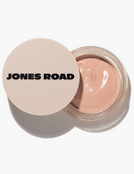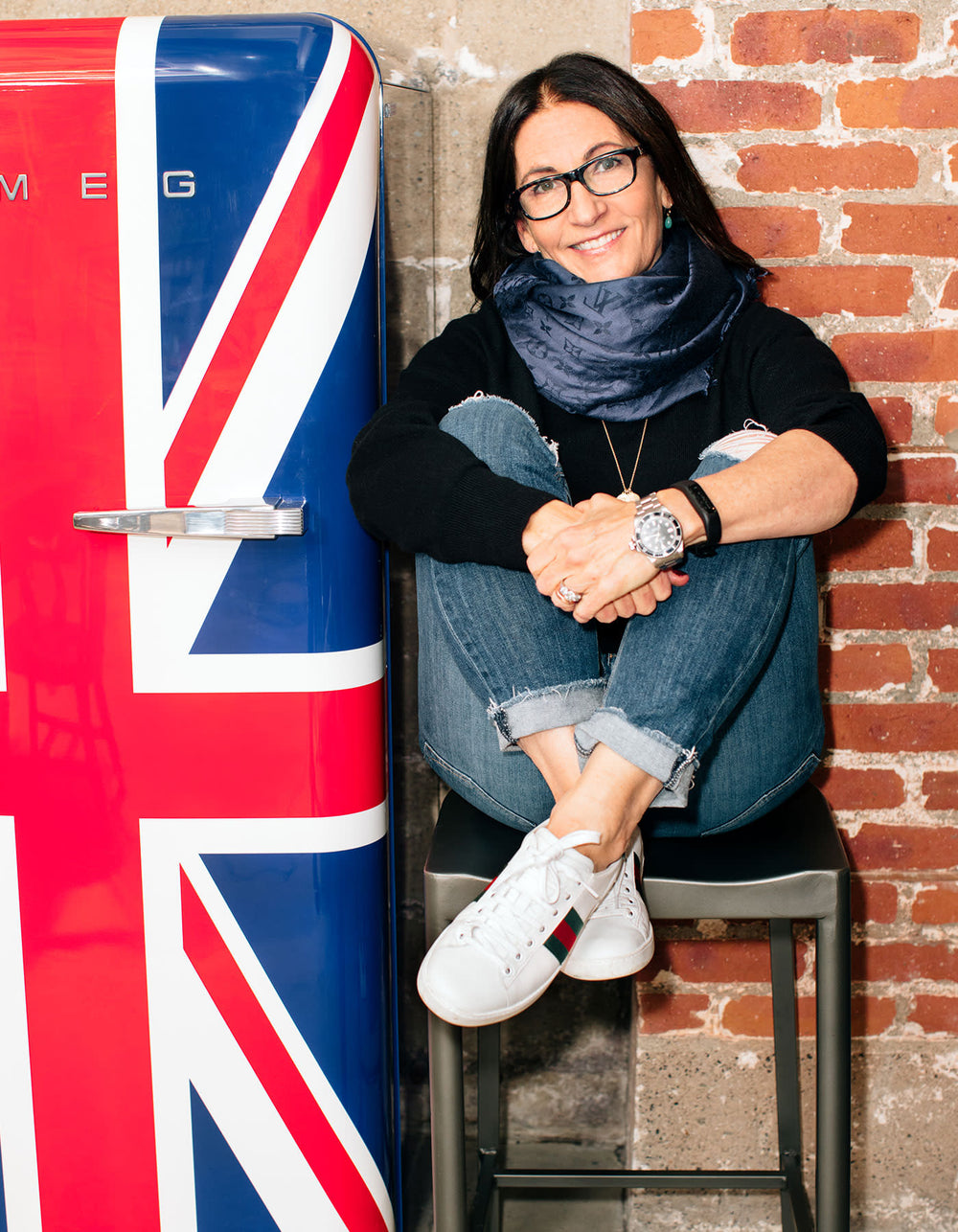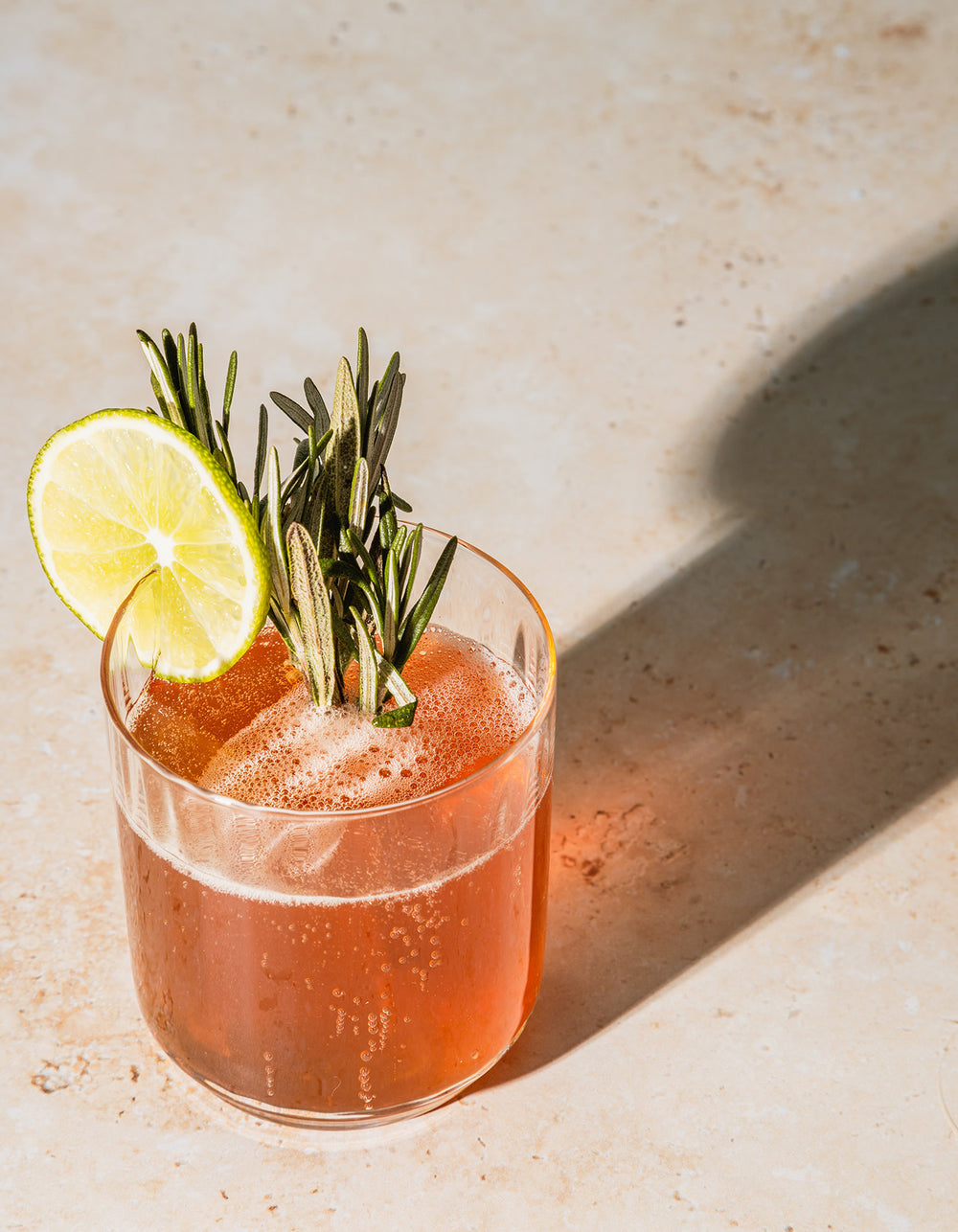Diary / Wellness / Sep 26, 2022
Have SIBO or IBS? This Sustainable Diet Plan Could Be Perfect for You
Written by: Michele Ross

Dealing with persistent bloating, brain fog, and mood imbalances? Can’t find relief no matter how many diets you experiment with and doctor’s visits you make? The same went for Krystyna Houser, a Brooklyn–based mother of three, who took years to discover the root cause of her problems and finally overcome the symptoms that plagued her daily.
In the Q&A below, learn more about her journey to finally getting a SIBO diagnosis and how she came to build The Good LFE, a lifestyle brand geared for people in search of relief from SIBO, IBS, and other manifestations of microbiome imbalance. Plus: an intro to low fermentation eating (LFE) and what is and isn’t approved on this sustainable diet plan for gut health.
Why is it so challenging to get a SIBO diagnosis?
The most frustrating part of developing small intense bacterial overgrowth (SIBO) was the period before formal diagnosis: being told that your symptoms are all in your head by an assortment of doctors. It typically takes up to six years to be diagnosed.
Despite affecting up to 12 percent of Americans and the fact that SIBO can be diagnosed with a simple breath test, it has, until recently, been dismissed by many GI doctors. SIBO symptoms are often dismissed as psychosomatic due to the wide range of symptoms, as well as a lack of diagnostic awareness.
What did your SIBO symptoms look like?
My symptoms began after a C-section went wrong and got infected. Several rounds of antibiotics later, I was left with brain fog and a rash, which progressed to extreme bloating, depression, and various other GI issues.
Determined to get better but entirely lost, I began what amounted to a health odyssey. Countless GI specialists disregarded my symptoms, which led me to try every diet imaginable. I was vegan, then paleo, then macrobiotic. It was exhausting. Nothing helped and in the end and I bordered on an eating disorder. Then my luck changed.

How did you develop The Good LFE and enlist leading GI doctors to help you build it?
After two years of being told by various doctors that my symptoms were “all in my head” or related to postpartum depression, I finally connected with two of the foremost gastroenterologists in the world, Dr. Mark Pimentel and Dr. Ali Rezaie, who co-authored The Microbiome Connection and [lead microbiome research at] MAST Cedars Sinai. After a simple breath test confirmed that I did in fact have SIBO, I began the doctors’ recommended course of treatment:
-
a zero fermentation “elemental diet” that acted as a cleanse of my system
-
low fermentation eating (LFE)
Their treatment worked; I no longer suffered from brain fog, bloating, or any other GI issues. The diet was somewhat restrictive, but I began to experiment and improvise and develop recipes, and that was the beginning of The Good LFE Cookbook, which evolved from my need to feel like I was eating normal foods again. I felt that I had to share what I learned to help people figure out SIBO quickly and [address it] easily.
What is LFE and how does it help with SIBO and other gut issues?
The main goal in treating SIBO is to create an unfriendly place for bacteria to thrive in the small intestine and allow your gut’s cleansing waves to function optimally once more. The LFE diet consists of easily digestible and lactose-free foods that will not linger in the small intestine, feed on excess bacteria, and create more gas.
A critical component of the diet is spacing meals every four to five hours, which allows for the intestinal cleansing wave to kick in. LFE isn’t nearly as restrictive as the FODMAP diet, which can create nutrient deficiencies at approximately three months. Our cookbook shows you how to make entirely “normal” and delicious recipes using this diet’s principles.

What foods are (and aren’t) approved on the LFE diet?
There are so many foods that are permitted—and there are easy substitutions for your favorite meals—all of which are highlighted in The Good LFE Cookbook. Our goal was to show people how with a few tweaks they could return to eating that felt very normal and not overly restrictive.
A few examples of permitted foods are:
- all animal proteins
- lactose-free dairy (such as parmesan)
- easily digestible fruits and vegetables
- a variety of condiments
Some foods to avoid on the LFE diet plan include:
- live-cultured yogurts
- hummus
- beans
- soy products
- high fructose corn syrup
Is low fermentation eating suitable for everyone?
Consulting a doctor is always recommended before starting a new diet and when experiencing GI issues for more than two weeks. Yet the LFE diet is neutral and sometimes described as a good de-bloating diet, which can be adopted by anyone apart from celiac patients since flour, pasta, and gluten are allowed.
 Miracle Balm
Miracle Balm
 The Face Pencil
The Face Pencil
 What The Foundation
What The Foundation


